All
Illustrations
taken from: The Sibley Field
Guide by David Allen Sibley
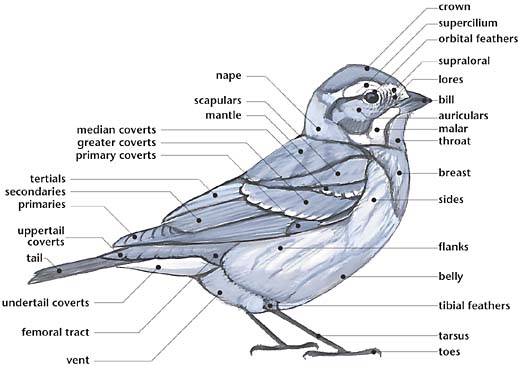
|
Detailed topography of
head feather groups, showing complexity of head feathering on a
typical passerine. Top: A schematic diagram of the groups.
Bottom: The actual markings on White-throated Sparrow.
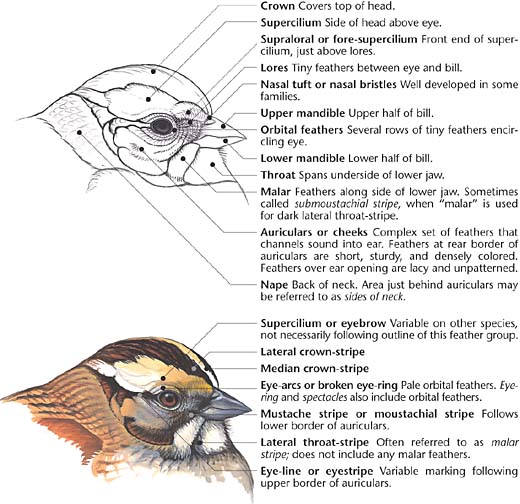
|
Top: Basic passerine body feathers, from front.
Center: Basic passerine body feathers, from behind, with
feathers fluffed.
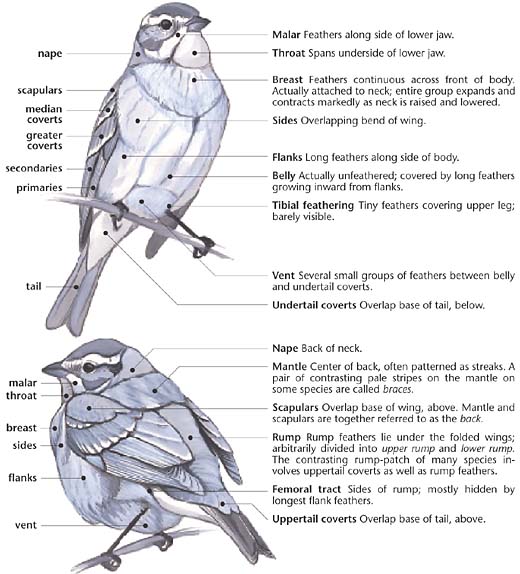
Passerine in alert, sleeked posture. In
this pose, with the wings held out from the body, the usually
concealed lesser coverts and marginal coverts are easily seen.
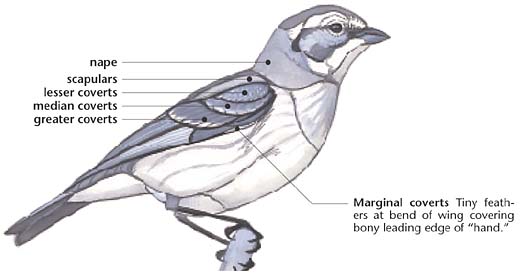
|
Top: Right wing of a
passerine, closed but held loosely. Note how the feathers stack
up, with the innermost tertial on top and the outermost primary
on the bottom. With the wing folded against the body, only the
outer edges of the remiges are visible. Secondaries and
primaries are numbered from center of wing (same order in which
most species molt).
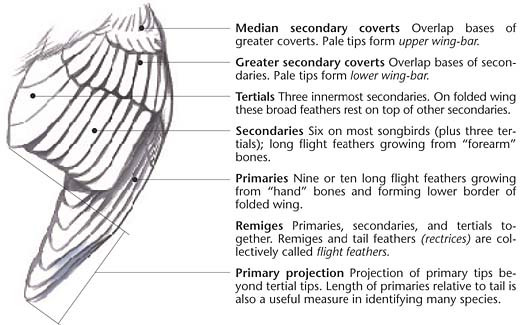
Passerine in flight,
from above. Note that outer webs of flight feathers are visible.
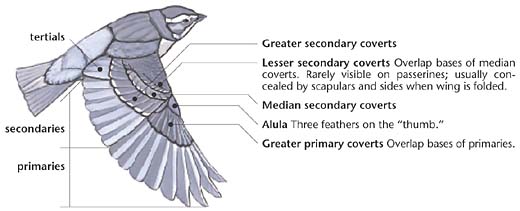
Passerine in flight,
from below. Note that inner webs of flight feathers are visible.
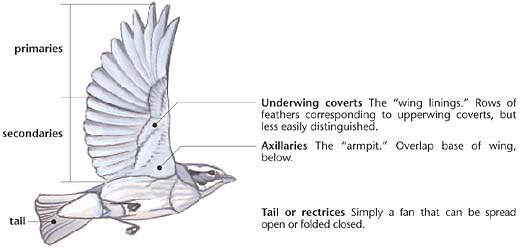 |
Top: Small shorebird,
relaxed. This typical shorebird differs significantly from
passerines in wing structure and in its two distinguishable
groups of scapulars, which are much more prominent than the
scapulars on passerines. The scapulars hang loosely when
relaxed, covering most of the wing. (They are often pulled up
when active, exposing the wing coverts.) The secondaries and
primaries are nearly or entirely concealed when the wings are
folded. Note the many rows of lesser coverts (bottom
illustration). The pale V on the back of many shorebirds is
formed by pale edges on the mantle and upper scapular feather
groups.
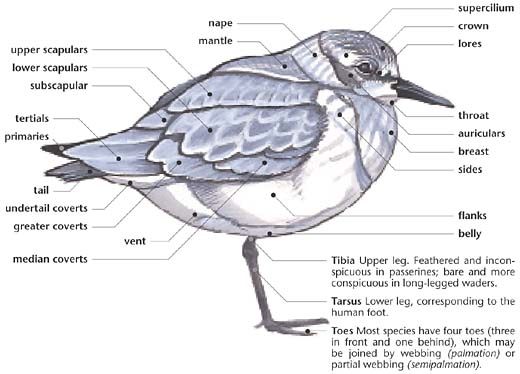
Small shorebird,
active. Note how changes in posture affect shape of nape,
mantle, scapulars, throat, and breast.
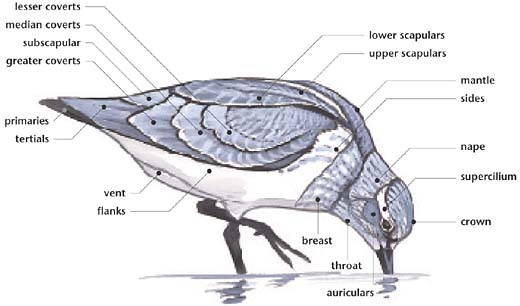 |
Duck, swimming. Note
that waterbirds such as ducks and shorebirds are more or less
uniformly covered with feathers to create seamless
waterproofing. It may be difficult to distinguish the feather
groups on any part of a bird that is normally in contact with
water.
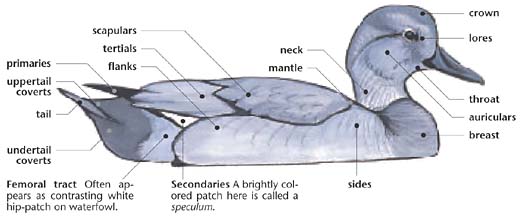 |
Large gull, standing.
All feather groups are essentially the same as on a shorebird.
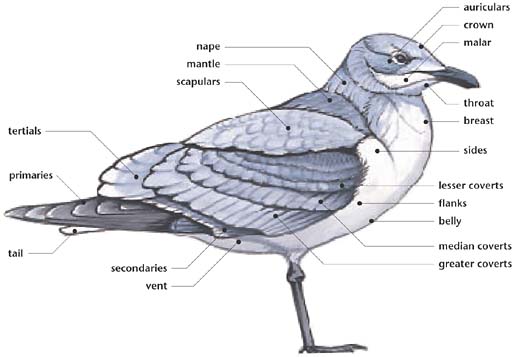
Gull in flight, showing
feathers typical of most long-winged species. Left: From below.
Right: From above. The pale wingstripe seen on many shorebirds
is formed by pale bases of secondaries and/or primaries (often
combined with white tips on greater coverts). Windows are
translucent patches on flight feathers, visible on a flying
bird, where lightly pigmented areas allow light to pass through.
A carpal-bar is a contrastingly colored band on the upperwing,
extending along a diagonal line from tertials to carpal joint,
or "wrist" (not always the entire distance). A dark carpal bar
forms part of the M pattern seen on many species. Interestingly,
this bar crosses all the rows of wing coverts and does not
follow the contours of any single feather-tract.
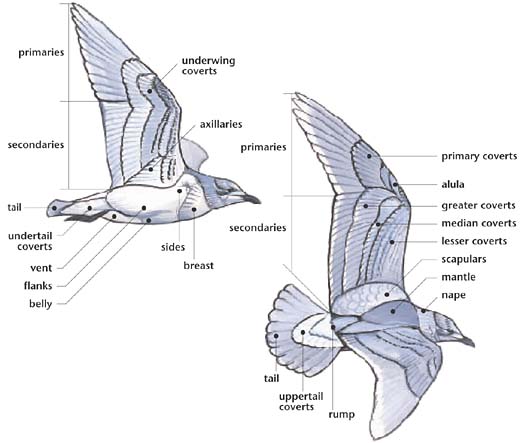
Head of large gull,
showing bare parts that are important in gull identification.
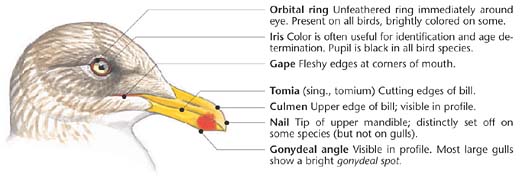 |
|
All
Illustrations
taken from: The Sibley Field
Guide by David Allen Sibley |
|
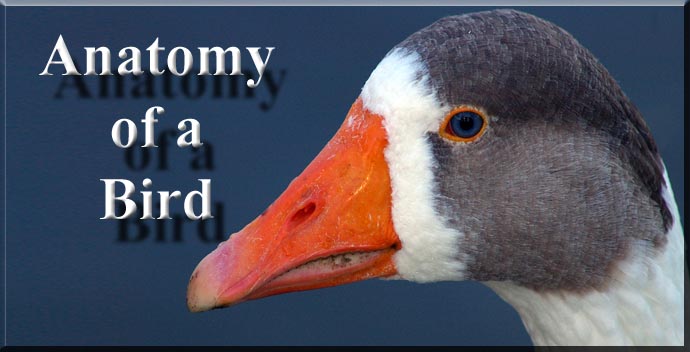
 Home
Home What's New
What's New Bible
Bible Photos
Photos Hiking
Hiking E-Books
E-Books Genealogy
Genealogy Profile
Free Plug-ins You May Need
Profile
Free Plug-ins You May Need
 Get Java
Get Java.png) Get Flash
Get Flash Get 7-Zip
Get 7-Zip Get Acrobat Reader
Get Acrobat Reader Get TheWORD
Get TheWORD











